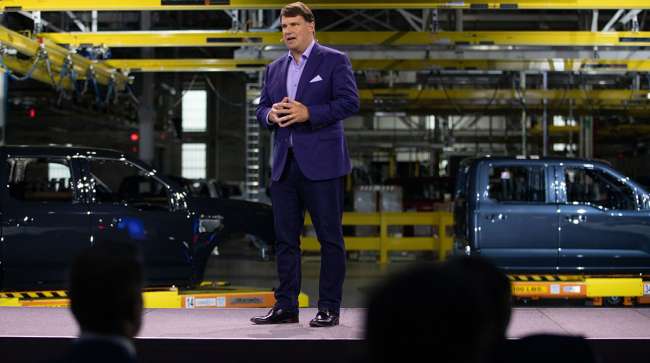Ford Sees EV Losses Growing to $3 Billion in 2023

[Stay on top of transportation news: Get TTNews in your inbox.]
Ford Motor Co. predicts losses in its electric vehicle business will grow to $3 billion this year as it spends big on new models and factories. The deficit matches its accumulated EV losses over the past two years.
The automaker issued guidance March 23 on its EV unit as well as performance for its traditional internal combustion engine and commercial operations as it moves to begin reporting financial results by business unit, rather than region. The company is keeping its profit forecast for the current year unchanged.
Ford also restated its results for the last two years, showing its nascent EV business lost $2.1 billion last year, before interest and taxes, and $900 million in 2021 on that basis.
CEO Jim Farley is radically reorganizing the 120-year-old automaker by cleaving it into three units — one for EVs dubbed Model e, another for internal combustion engine vehicles called Ford Blue and a third for commercial trucks and vans known as Ford Pro.

Joel Morrow of Alpha Drivers Testing & Consulting traveled across America asking one simple question: What if a trucker designed a truck? Hear the program above and at RoadSigns.TTNews.com.
Ford is the No. 2 seller of EVs in America on the strength of its F-150 Lightning plug-in pickup and battery-powered Mustang Mach-E. But it is miles behind Tesla Inc., which controls two-thirds of the U.S. EV market.
Farley’s aim is to take on Tesla and eventually surpass Elon Musk’s company, which is the world’s most valuable automaker. Ford is investing $50 billion to develop and build EVs through 2026 and has set a goal of manufacturing 2 million of the battery-powered models annually by then.
EV losses will grow by 43% this year as Ford spends heavily to develop a second generation of battery-powered models and invests billions in new factories to produce them, John Lawler, chief financial officer, told reporters in a briefing.
“There’s a lot of investment that’s going into Model e for the growth that we’ll be seeing,” Lawler said.
Ford reiterated its goal to reach an 8% margin, before interest and taxes, on electric vehicles by late 2026. Last year, electric vehicles generated a negative 40% margin by that yardstick, which is known as Ebit, Lawler said. But by the end of this year, he added that Ford’s EV business will be “approaching break-even” on a contribution-margin basis, which excludes research and development costs.
Ford will walk analysts through its plan to erase losses and begin turning a profit on EVs by 2026 at a “teach-in” March 23 at the New York Stock Exchange. The road to profitability will come from increased sales volume, more efficient designs, lower battery costs and more competitive distribution and pricing, Lawler said.
Ford’s EV losses last year were less than Deutsche Bank analyst Emmanuel Rosner expected. He wrote in a March 20 note that Ford likely had generated operating losses of $6 billion for the Model e unit in 2022 when factoring in significant research and development costs.
Pickups Bolster Profits
Ford’s EV losses are more than made up for by profits from traditional gasoline-fueled vehicles such as the top-selling F-Series pickups and Bronco sport utility vehicles. The Ford Blue business had $6.8 billion in Ebit last year, according to the automaker’s restated results.
Ford this year projects its internal combustion engine vehicles will generate about $7 billion in earnings before interest and taxes, which it characterized as a “modest improvement.” Farley has been critical of the performance of its traditional operations and is targeting $2.5 billion in cost cuts this year.
Ford’s commercial business this year is expected to nearly double its earnings before interest and taxes to almost $6 billion, the company projected. Last year, Ford Pro had Ebit of $3.2 billion, up from $2.7 billion in 2021.
Ford Pro “is scaling and growing,” Lawler said, noting the launch of a new Transit van this year. “There’s incredible pent-up demand in the commercial business.”
The company reiterated its full-year guidance of $9 billion to $11 billion in adjusted Ebit. Shares have been under pressures after back-to-back quarters of disappointing earnings.
Farley is counting on his companywide overhaul to reinvigorate and refocus Ford.
“This is far more than an accounting exercise,” Lawler said. “After 120 years, we’ve essentially refounded Ford.”
Want more news? Listen to today's daily briefing below or go here for more info:




